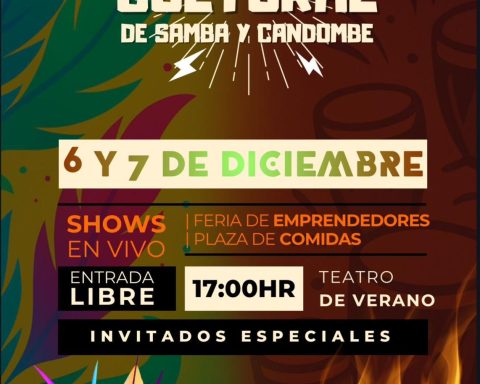Uruguay has historically fought for first place in the world in beef consumption per capita with Argentina. In fact, according to estimates from the Rosario Stock Exchange and the National Meat Institute (INAC), in 2021 the dispute stayed on this shore for the first time in several years. However, the data seem to confirm a trend that is consolidating over time: Uruguayans eat less and less beef.
Between 2017 and 2020 (the latest official data), the average consumer in the country went from consuming 54.6 kg of beef to 45.7 kg annually, a retraction of 16.3%, according to INAC.
Jorge Acosta, INAC Information Manager, maintained that although the official numbers will only be known in April, the agency estimates that in 2021 consumption “rebounded” a bit and reached 46.6 kg per capita, a figure that will not reach the level pre-pandemic.
However, the same did not happen with other types of meat. Chicken consumption has accelerated considerably in the last three years and would have reached 23.2 kg in 2021 according to Acosta, which marks a growth of 27% in that period. In 2018, consumption per person was 18.3 kg.
Likewise, pork has risen an important step within the protein options that Uruguayans eat, according to connoisseurs of the field. Hebert Falero, a butcher and secretary of the Union of Meat Vendors, told The Observer that while pork cuts today represent around 17% of the total traded, historically they were close to 7%. He added that this change occurred in the middle of the last decade, when “cheap meat began to come from Brazil.”
“Globalization is coming to Uruguay. Beef is expensive all over the world and it will also be expensive here, because it is a meat that is quoted (at high prices abroad). Instead, we have fast-produced meat that is much cheaper, which here was at crazy prices that were not real. The importation made the price of pork globalize and the proof is, it increased significantly (the consumption of that meat in the country)”, explained Falero.
“In the past, I used to sell a bondiola for the end of the year, for a party, as something special; today I sell 10 or 15 boxes per week of 20 kilos each. It was a luxury meal, now everyone eats bondiola; it became a food available to everyone, ”she considered.
The price and rise of chicken
The effect of prices is also a factor that plays a role when evaluating the dynamics of consumption. Before the pandemic, in 2019, Uruguayans reduced their beef consumption by almost 5 kg. The prices of beef cuts rose almost 29% that year, discounting inflation, while real wages fell slightly, which influenced consumer purchasing decisions. In addition, Falero pointed to the changes in the consumption habits of some inhabitants.
“People with purchasing power have begun to have a varied diet, not eating as much meat. Today in neighborhoods like Pocitos, Carrasco, all areas with high purchasing power, many fewer kilos of beef are sold than before. People consume other types of things, much more chicken is being consumed. This meat is rising year after year and has 20% of the market”, he highlighted.
When looking at the INAC data, it can be seen that between 2015 and 2017 less than 2.7 kg of beef was never consumed for each bird, but that proportion fell to 2 kg last year.
Germán Möller, president of the National Association of Butchers of Uruguay, was more concise. “As long as their pockets allow it, people will consume red meat, unless it is for an absolutely necessary economic issue. But as long as this price difference continues, people will continue to consume chicken meat and they will continue to consume pork meat”, he projected.
Diego Battiste
Poultry meat consumption shows the opposite trend to beef.
“As much as you like red meat, if it’s not enough for your pocket, you’re going to consume as much protein as you can. We all like to eat a barbecue but well, when you can’t, you’ll eat a roast pork or another cut,” Möller said.
“Chicken has grown a lot because of its price and because it is considered a healthy meat, diets are largely based on ‘supremita’. Personally, I tell you that chicken meat has nothing to do with it, nothing healthy compared to beef, ”said Falero.
The merchant explained that “the cow spends years eating totally natural grass and its body filters the poison that remains in the liver, while the chicken is raised in 20 days, I don’t know how,” he confessed. “They are fads, just like feedlot meat that gives it a terrifying forward and it has silly cholesterol, much more than common meat,” he said.
There are butchers who believe that chicken sales could be even higher if imports from Brazil were freed. Today “chicken production is being managed by five or six that regulate the price” and “it is not a healthy price”, according to Falero.
Asked about the impact of the pandemic on sales, the secretary of the Union of Meat Sellers assured that the losses were mainly in deliveries, due to the closure of restaurants, dining rooms and that schools were not working. “But as far as the business itself is concerned, the counters of the butcher shops worked great,” he assured.
The merchant recalled that when people were locked up in their homes, families returned to cooking as in the old days because they had time and returned to making elaborate meals, which contain less meat than what is consumed daily. “The consumption of roast meat dropped, for example, there were no meetings and that affected sales,” he pointed out.
Sheep meat loses foot
Butchers also warn about the marked decrease in the consumption of sheep meat. “It has noticeably decreased in Montevideo, I’m sure. If you look at the sale of lamb 10 years ago and now, it has dropped a lot. You know why? For the price! Lamb is paid very well in Europe”, said Falero.
Sheep meat —much less consumed— had a sharper fall than bovine meat. If you look at the projection for 2021, INAC figures indicate that Uruguayans began to eat 41% less of this animal protein in just six years: from 3.7 kg in 2015 to 2.2 kg last year.

















